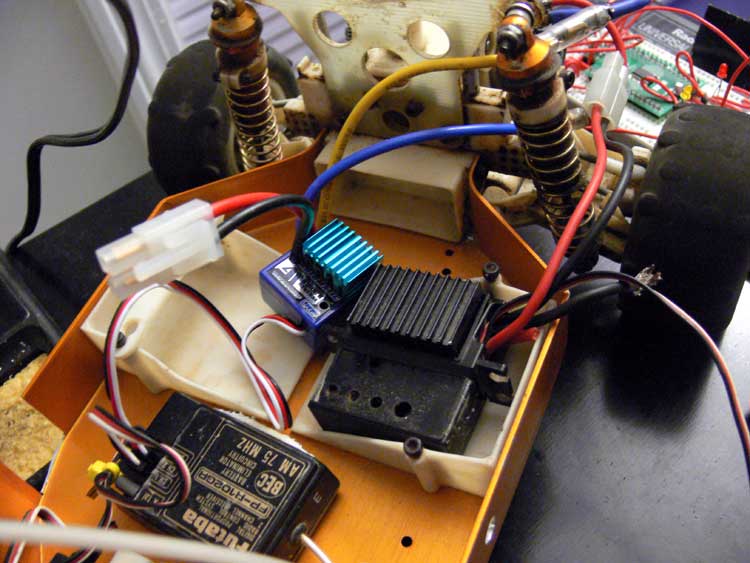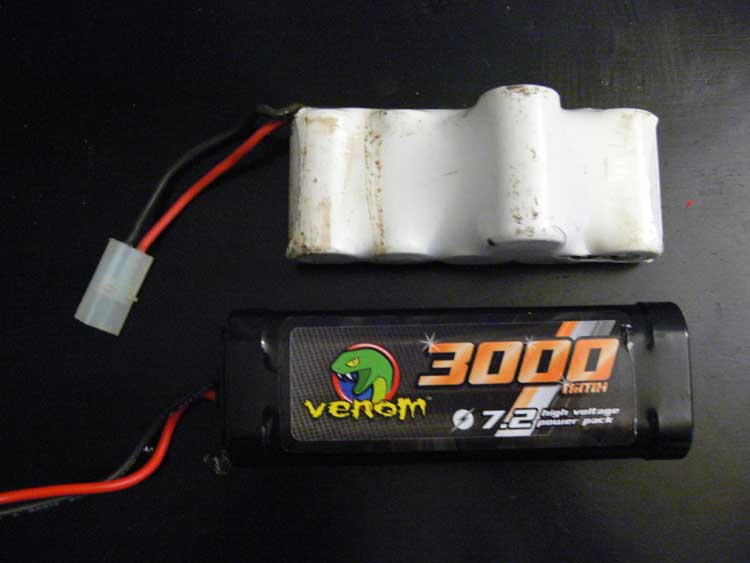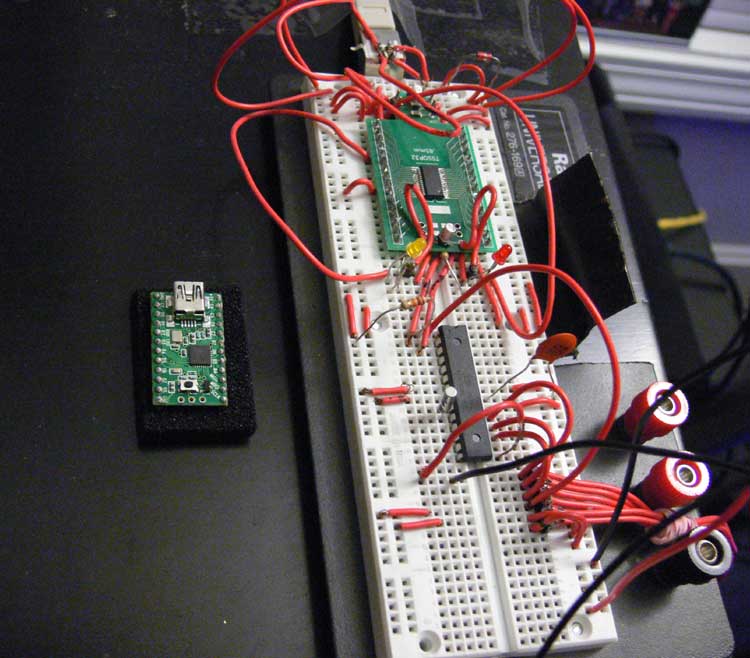
Comparing Old and New RC Technology
Fri, 03 Jul 2009 23:18:16 EST
I have really put my old RC car through a lot while teaching myself electrical engineering. The servo and electronic speed control have been the most useful components I
have had to experiment with. I also have used the old 7.2V Nicad battery extensively for powering breadboards and prototype projects. I realized before I left for Buffalo to
finish up the Theodore Roosevelt Inaugural Site that the battery had gone bad and I also accidentally broke the old Futaba electronic speed control.
Today I drove down to Foxboro to rchover.com's storefront location and picked up a new electronic speed control and battery. RC technology has changed drastically in the last 20 years just like computer technology. In the side by side image of the two electronic speed controllers, the old Futaba is the large black box. It has forward and reverse, but requires you to turn two little adjustment knobs in order to nail the forward and reverse. Electrically speaking, you'll notice a big black heatsink on the top. Underneath that, there are nine MOSFETS setup in a H-bridge configuration in order to allow for forward and reverse control of the motor. If you look at the new speed controller I just got, a LRP AI Runner, its about a quarter of the size with many more features. The LRP requires no adjustment and is waterproof. Electrically, it only has 4 MOSFTETS too (the minimum to make a full forward reverse hbridge).
Check out the batteries side by side. The old white NiCad battery is in an odd configuration that the guys at the rchover shop said is very uncommon these days with five cells on the bottom and one on top. The NiCad battery has half the capacity as the new NiMh battery, takes up more room, and chemically is more toxic then the NiMh counterpart.
The whole reason I got these new parts was so that I can continue progress on an in-line device for RC cars that I have been working on for a while. While reducing RC part size, I have also been thinking about how I can make this device smaller and cheaper from an electrical standpoint. After discovering the very interesting TDI Web Log some time ago while researching the AT90 series of microcontrollers, I came across teensyduino and snagged one. Teensy will allow me to prototype the in-line device much faster then making my own breakout board which in my book is a good thing. Its also going to be much less frustrating developing using this tiny guy instead of my FT232RL + Atmega 8-L setup that I have been using for quite some time.
Today I drove down to Foxboro to rchover.com's storefront location and picked up a new electronic speed control and battery. RC technology has changed drastically in the last 20 years just like computer technology. In the side by side image of the two electronic speed controllers, the old Futaba is the large black box. It has forward and reverse, but requires you to turn two little adjustment knobs in order to nail the forward and reverse. Electrically speaking, you'll notice a big black heatsink on the top. Underneath that, there are nine MOSFETS setup in a H-bridge configuration in order to allow for forward and reverse control of the motor. If you look at the new speed controller I just got, a LRP AI Runner, its about a quarter of the size with many more features. The LRP requires no adjustment and is waterproof. Electrically, it only has 4 MOSFTETS too (the minimum to make a full forward reverse hbridge).
Check out the batteries side by side. The old white NiCad battery is in an odd configuration that the guys at the rchover shop said is very uncommon these days with five cells on the bottom and one on top. The NiCad battery has half the capacity as the new NiMh battery, takes up more room, and chemically is more toxic then the NiMh counterpart.
The whole reason I got these new parts was so that I can continue progress on an in-line device for RC cars that I have been working on for a while. While reducing RC part size, I have also been thinking about how I can make this device smaller and cheaper from an electrical standpoint. After discovering the very interesting TDI Web Log some time ago while researching the AT90 series of microcontrollers, I came across teensyduino and snagged one. Teensy will allow me to prototype the in-line device much faster then making my own breakout board which in my book is a good thing. Its also going to be much less frustrating developing using this tiny guy instead of my FT232RL + Atmega 8-L setup that I have been using for quite some time.

Charles Palen has been involved in the technology sector for several years. His formal education focused on Enterprise Database Administration. He currently works as the principal software architect and manager at Transcending Digital where he can be hired for your next contract project. Charles is a full stack developer who has been on the front lines of small business and enterprise for over 10 years. Charles current expertise covers the areas of human pose estimation models, diffusion models, agentic workflows, .NET, Java, Python, Node.js, Javascript, HTML, and CSS. Charles created Technogumbo in 2008 as a way to share lessons learned while making original products.
Comments
No one has posted any comments yet, be the first
Comments are currently disabled.



